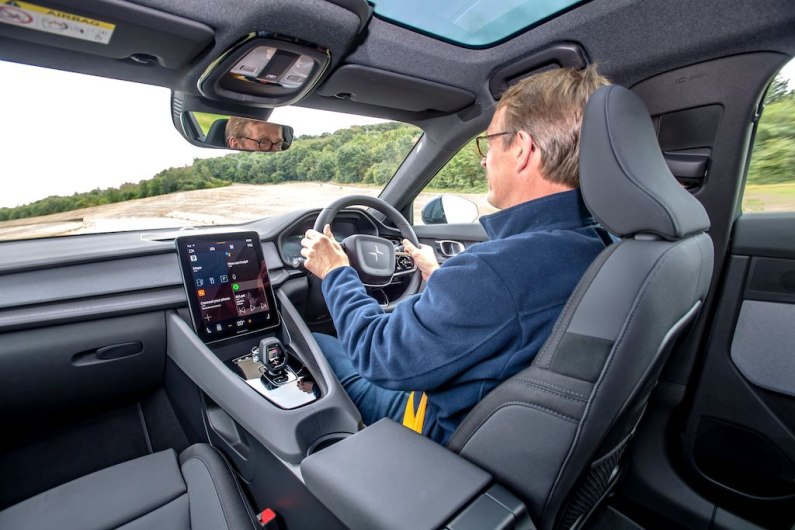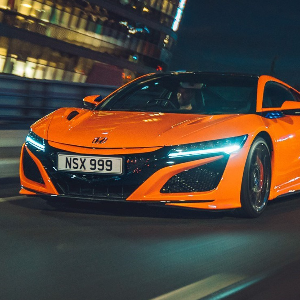
Can Volvo's electric arm take the fight to Tesla?
In March 2016 Tesla unveiled the Model 3, its third model and the high-volume car that had been the aim of the original founders, Martin Eberhard and Marc Tarpenning. Deposits roared in, and while deliveries took a while to get going, by the end of 2018, over 100,000 customers were raving about their new Model 3s. And in that time, not one of the traditional motor makers has produced a rival, until now...
Polestar is the Chinese giant Geely’s all-electric brand, based in Sweden and building its cars in China. Its first model was last year’s limited-edition plug-in hybrid, a £140,000 bit of froth to relaunch the brand, but the aim has always been battery electric vehicles of which the Polestar 2 is the first.
Chief designer Maximilian Missoni, is honest enough to admit that the base design for this five-door executive car is heavily derived from a Volvo concept car – Volvo is also owned by Geely as is the tyro battery SUV maker Lynk & Co, Lotus, Proton, taxi maker the London EV Company, commercial vehicle builder Yuan Cheng Automotive and Qianjiang Motorcycles.
Missoni’s isn’t the easiest of jobs, since Polestar CEO Thomas Ingenlath is a former head designer at Skoda and held senior roles pushing the felt tips at Volkswagen and Audi. Does he micromanage every crease and line? Missoni isn’t telling.
What’s clear, however is that the Polestar 2 is a good-looking thing, with sharp lines and a kind of muscle-car looks we’ve also seen on the 2018 Peugeot e-Legend concept, which is also slated for production. The roof line is pleasingly curvaceous and the front is aggressive with a wrap-around strip of tail-lamps. I’m not sure about the wheelbase-to-length proportions, however. The 4.6-metre long body sits awkwardly on the 2.7-metre wheelbase and that discarded-mattress grille design is dreadful.
This all-steel car weighs 2,123kg; over a quarter of a tonne heavier than the equivalent Tesla Model 3, which Polestar says is down to its car’s good crash safety and bodyshell stiffness. The CMA bodyshell on which the Polestar 2 is based was actually designed to take combustion engines as well as hybrid and battery electric, so there’s a big transmission tunnel running down the middle of the cabin.
The drivetrain consists of twin AC synchronous electric motors driving each pair of wheels and providing a combined 408bhp at 4,350rpm and 487lb ft of torque which peaks at the same revs. The 500kg, 78kWh LG Chem-supplied, lithium-ionbattery is under the car and in the tunnel, and in the interests of longevity, the system uses just 75kWh of it.
Performance is a top speed of 127mph, with 0-62mph in 4.7sec and a range in the WLTP test cycle of 292 miles – although like all battery electric cars, the way you drive, hot or cold weather, and hills and mountains will quickly drop that total down below 200 miles.
The car comes with a standard 11kW capacity AC onboard charger and a DC charge capability of up to 150kW. Charging times are quoted as 40 minutes for an 80 per cent fill on a DC fast charger, though it will take much longer than that on a 7.4kW home wall box where most folk will plug in.

While it isn’t necessarily a deal breaker, that weight drags the Polestar 2’s efficiency figures down to 3.89 miles per kWh, which isn’t great and using the latest UK power generation figures, the well-to-wheels CO2 emissions are 37.2g/km. Driving electric isn’t necessarily an environmental free lunch.
There’s one version available at the launch with one price and a choice of trim packs. Basic price before including the Government’s £3,000 Plug-In Car Grant (PICG) is £49,900, although our car came with a £5,000 Performance Pack, consisting of 20-inch diameter alloy wheels and 245/40/20 Continental tyres, four-piston Brembo front disc brakes in anodised yellow (along with the valve caps and seat belts), lowered steel springs and Öhlins Dual Flow Valve manually adjustable dampers.
The cabin looks and feels pretty conventional, compared with the theatre of the Tesla Model 3. There’s a conventional driver’s instrument binnacle (although it is digital), a full-width dashboard with ventilators and Volvo’s 11-inch portrait touch screen in the centre. It’s all finished in black and grey with new sorts of cloth and materials, which are much nicer to the touch than they first appear. The seats are comfortable, with a highly adjustable driving position and you sit lower than in battery electric rivals thanks to those batteries tucked into the tunnel rather than under the floor.
The Human Machine Interface (HMI) is powered by Google’s Android system and the screen will be familiar to anyone with an Android phone. Unless you are in love with the technology, this is all a lot less exciting than it sounds, but the graphics are clear and simple and the voice recognition is as good as a modern smart phone with 4g. Which is terrific if you have an Android telephone, but not if you’ve got an Apple iPhone. Polestar says it is working on incorporating the iPhone in the system and it should be available by the autumn.
Connection is via tiny USB C sockets so you might have to buy a converter and there’s also an inductive phone charging pad. There were some quite distracting software issues with the cars we drove, but Polestar says that a fix is in and customer cars won’t be so afflicted.
In the rear, the bench will seat a couple of adults with head and leg room to spare and a child straddling the tunnel, though the big glass sunroof restricts headroom if you put your head back on to the headrest.
The bonnet hides a 35-litre circular compartment for cables and other grubby bits, with the 405-litre rear boot remaining clear. The tailgate is wide and big and there’s a low lip for ease of dragging in the weekly shop. The Tesla Model 3 has a boot volume of 425 litres.
There is a conventional key, but also the facility to use your phone as a key. You just walk up to the car, open the door with a conventional handle and climb in. There’s no ‘Start’ button, the Polestar is ready for the off as soon as you press the brake pedal and select Drive.
Through the centre touch screen, you can select a bit of drivetrain ‘creep’ when stationary, there are three steering weight settings and selectable one-pedal operation where easing or lifting the throttle activates the regenerative braking function.
Like all powerful electric cars, the full-bore acceleration is heady (and nauseous for the passengers). Overtaking is absurdly easy, but you need to have a care as it’s easy to end up travelling far faster than is safe or legal. Using this performance capability too often is also deleterious to the range and some rivals will overheat their battery systems if you do it too often. The Polestar’s throttle and braking software is well judged, however, and it’s an easy car to drive briskly without terrifying everyone or utterly kyboshing the range. We would have liked some regen braking paddles behind the steering wheel, however.
Safety software works well with camera and radar systems warning of braking events, and eventually putting on the anchors. It’s all Volvo based of course, but I thought it less trigger happy than the Volvo set up.
McPherson-strut front and multi-link independent rear suspension means the Polestar is chassied as other conventional executive cars but carrying another half a tonne in weight. It gives the suspension and the tyres a lot to do. Dynamically the Performance Pack cars are set firm, which suits the car, but those Öhlins dampers have a fiercely rising damping rate, which gives a jiggly discombobulated feeling over broken road surfaces and the car ‘heaves’ over long bumps. You desperately want to adjust the dampers to a softer setting, but that involves jacking the car up and grovelling in the wheel arches.
Drive hard and those dampers work well, restricting initial roll into the turns and complimenting the 20-inch tyres. The steering is direct and progressive off the centre position, but there’s no feedback to speak of. In all the Polestar feels more positive and intuitive than the Tesla Model 3, although both cars corner with a numb, grippiness that leaves you driving on trust rather than knowledge of what’s going on – the tyres looked quite worn out on my return.
I managed a quick drive in the standard set up car, which is softer, more compliant, but with too much body movement if you drive hard. Somewhere in there is the optimum setting, but it wasn’t available that day and while Polestar boasts about its lack of showrooms, I think this is a car that you absolutely have to drive before you buy.
So now the Tesla Model 3 has a rival, better to look at, more conventional in the cabin and backed with Chinese cash rather than a Californian squillionaire’s. I liked it and thought it was a marginally better drive than the Tesla, though a bit too stiff on our broken roads.
Is it a practical only-choice executive car, though? That’s more difficult. You’d need to pre plan a lot more slack into your schedule, prepare for the odd night out and frankly we still need a more comprehensive and much more reliable network of fast chargers in the UK before you could see the Polestar 2 as the only car in your driveway.
The Facts
Polestar 2
Price: £49,900 (before £3,000 PiCG)
Motor: twin 150kW ac synchronous motors driving front and rear wheels
Battery 78kWh (gross), 75kWh (net), 500kg lithium-ion unit
Power: (peak) 408hp @ 4,350rpm
0-62mph: 4.7 seconds
Top speed: 127mph
Range: WLTP 292 miles
Efficiency: 3.89 miles per kWh
CO2 emissions: zero at tail pipe, well-to-wheels 37.2g/km

